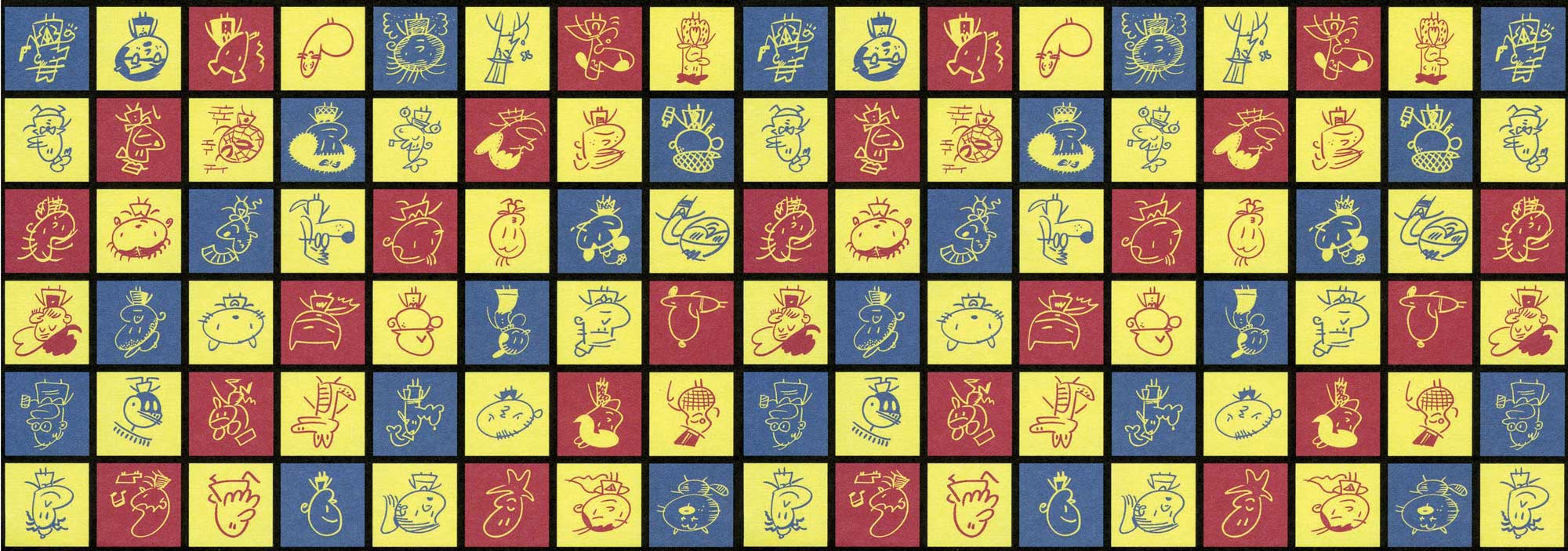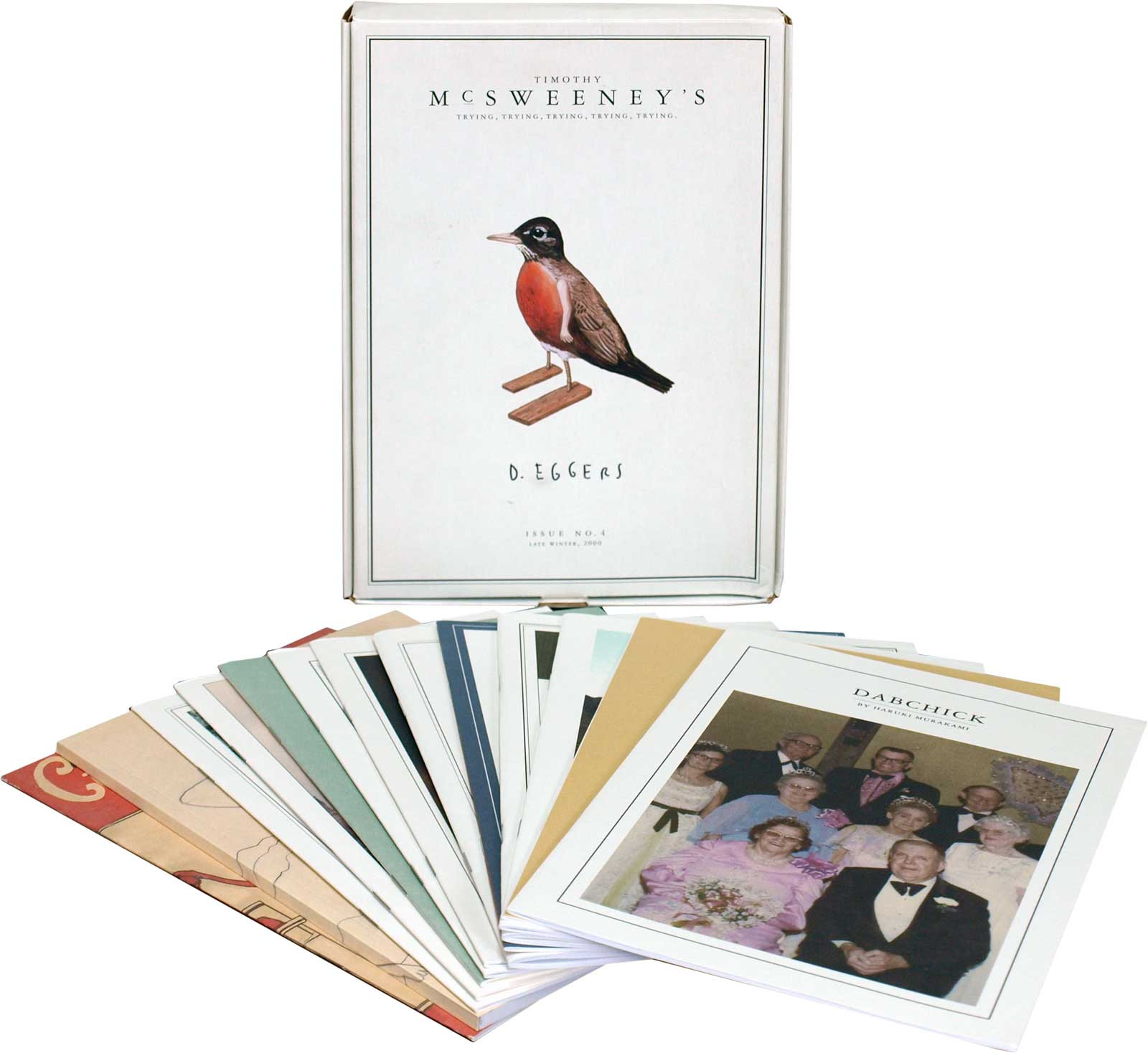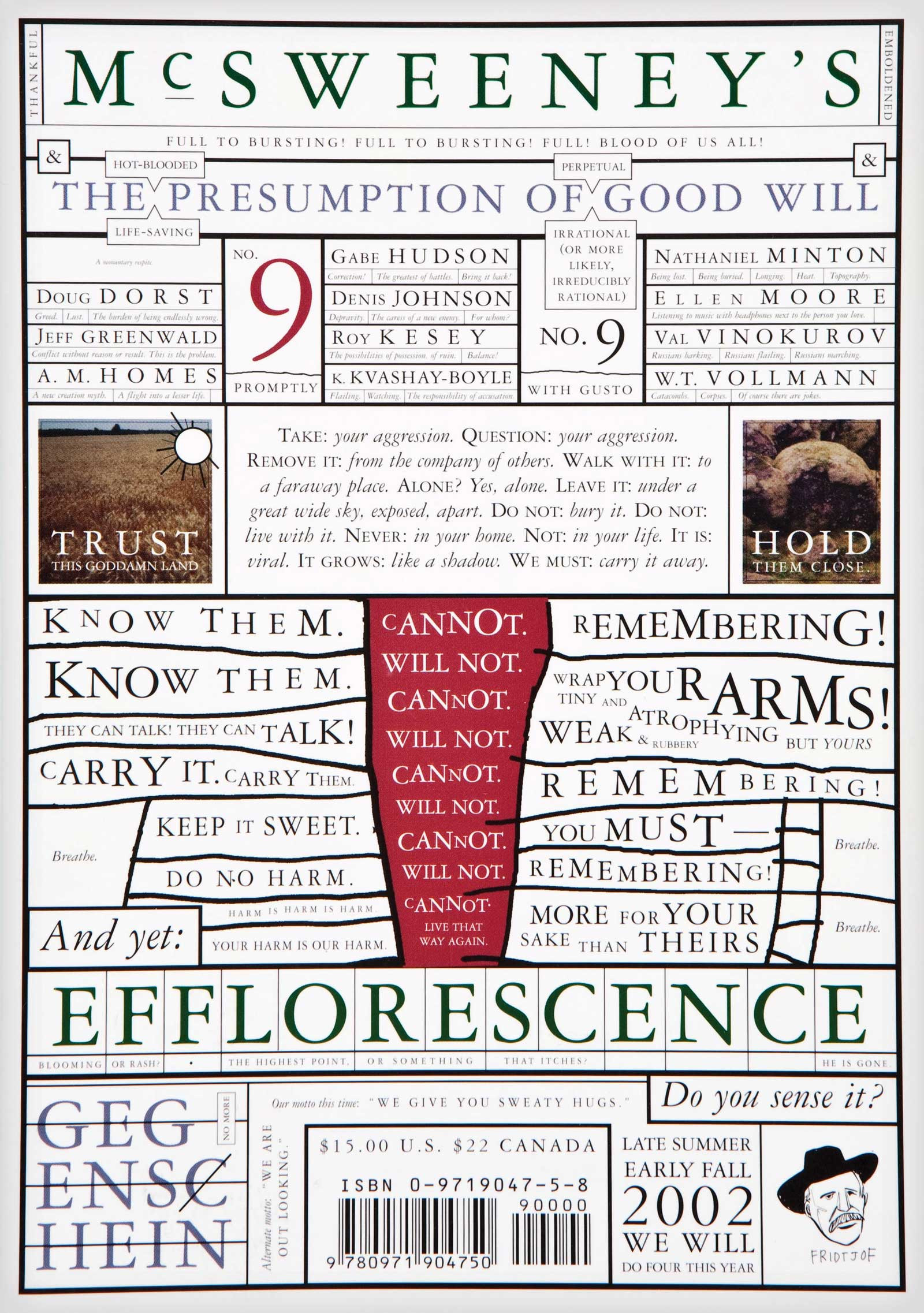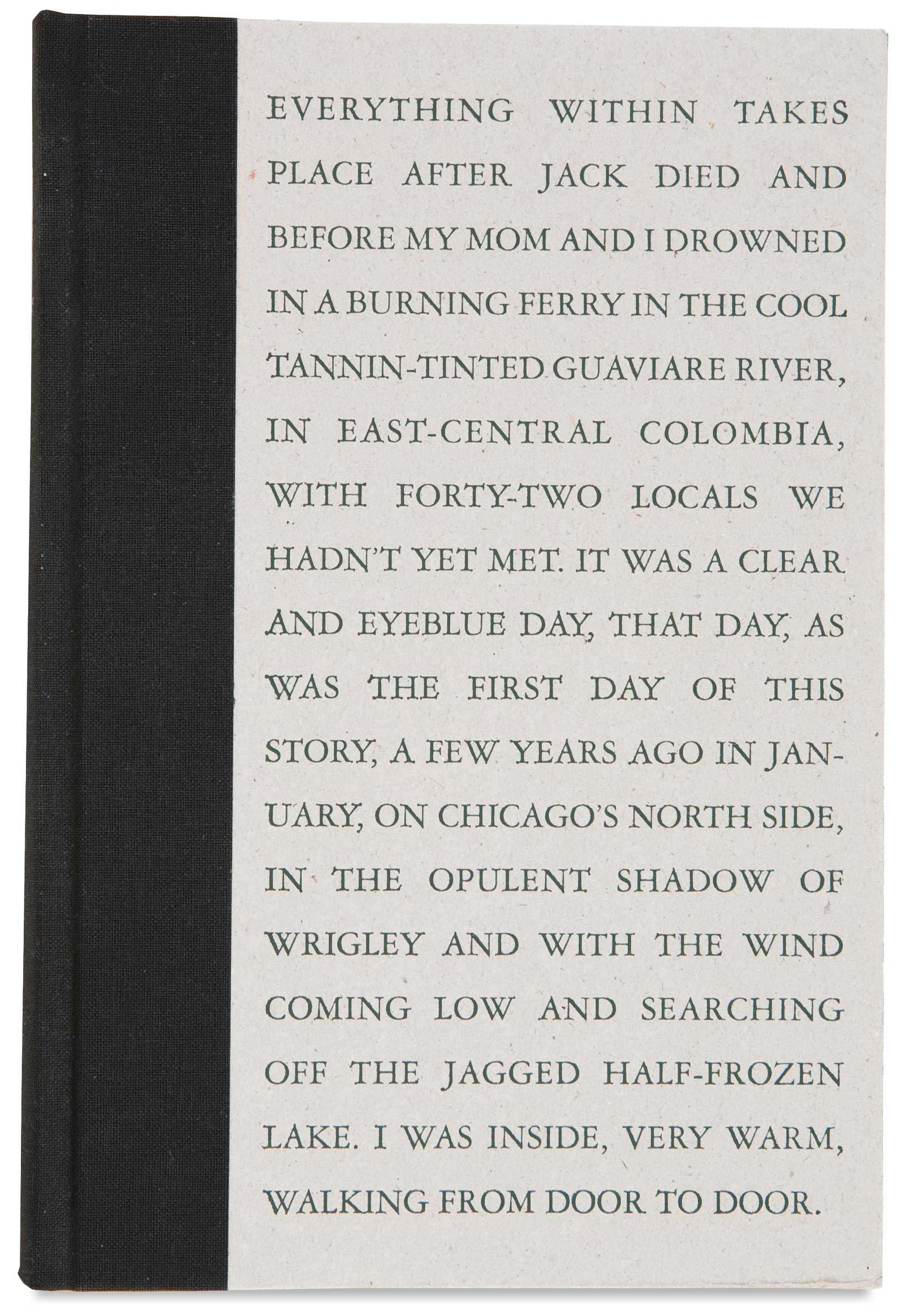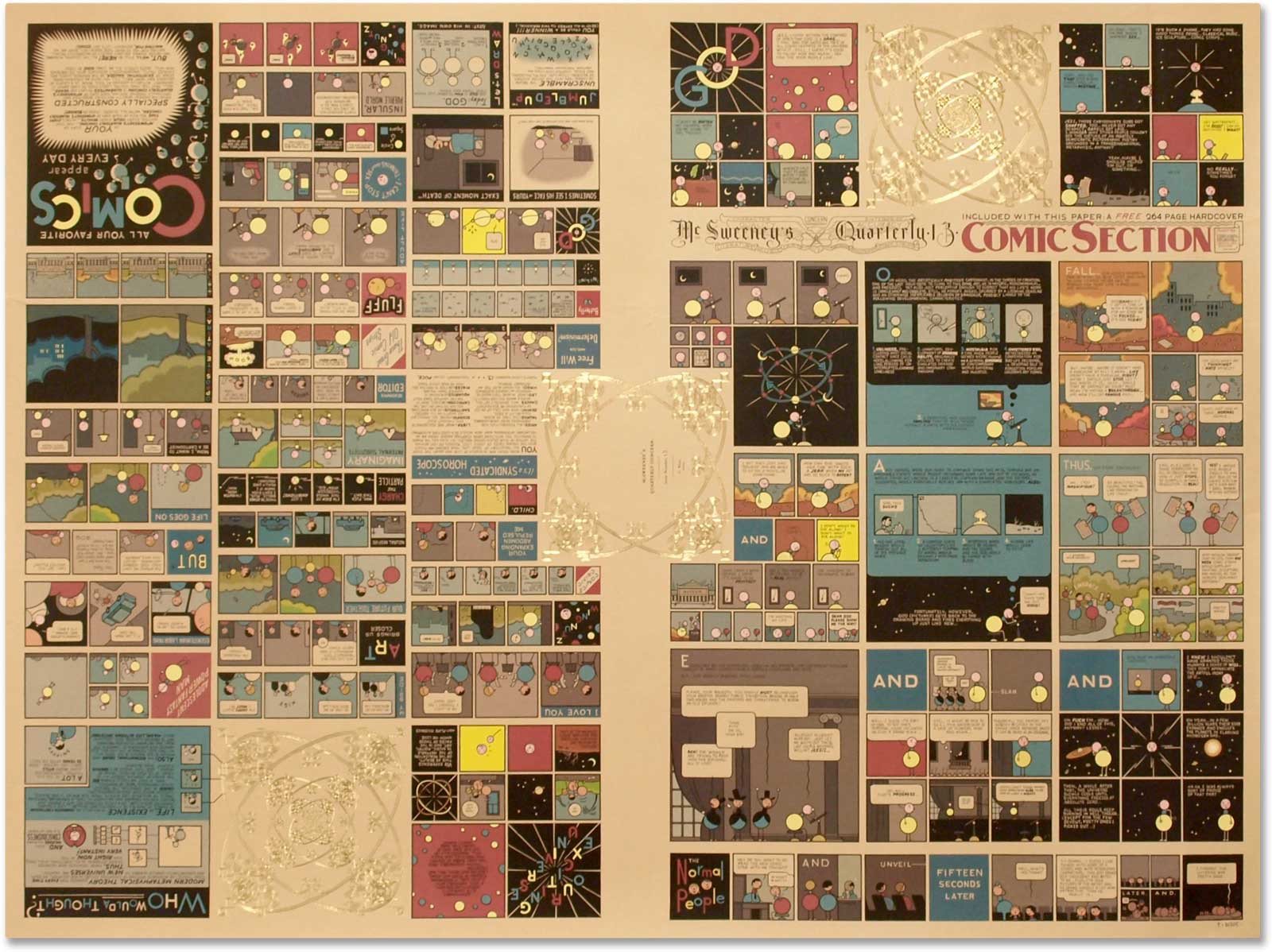Each quarterly…and every book they produce, is a celebration of paper and all the incredible things that can be done with it,” said Anthony Doerr, author of the short story collection The Shell Collector. Writers heap praise on McSweeney’s—for its originality, craftsmanship, business model. Dan Kennedy, author of Rock On: An Office Power Ballad, said, “Here are people making something beautiful and positive and refusing to subscribe to this thing that you can only do what makes the best financial sense and moves your company ahead. It’s a really powerful thing to see people doing things their own way and succeeding.”
Aside from the magazines—the sharp, witty, confounding, delightful, odd, marvelous, and challenging magazines—there are also the books they publish under the McSweeney’s name and two additional imprints, Believer Books and the Collins Library. They published Chris Adrian’s The Children’s Hospital, about a floating hospital in a raging storm. They published Icelander by Dustin Long about, in part, adventures in an underground Icelandic kingdom. There’s The People of Paper, Salvador Plascenia’s debut novel, a crazed book, in which columns run in different directions across the page, and sections are blacked out. The story follows Frederico de la Fe, leader of a war against, amongst other things, omniscient narration.
Under the Believer Books banner, they’ve put out Tamler Sommers’ A Very Bad Wizard: Morality Behind the Curtain, a discussion of moral psychology, Nick Hornby’s Shakespeare Wrote for Money, his reading diary, of sorts, and the compendium The Believer Book of Writers Talking about Writers. Collins Library, yet another imprint, publishes odd out-of-print titles like Geoffrey Pike’s 1916 book To Ruhleben—And Back, a memoir about Pike’s experiences in the Ruhleben prisoner-of-war camp during World War I.
So there’s also that. But what about The Believer? It’s a monthly magazine that recently celebrated its seventy-fifth issue, primarily focused on literature and how it intersects to our society. One of the editors is Eggers’ wife, Vendela Vida, author of Let the Northern Lights Erase Your Name and the screenplay Away We Go (which she co-wrote with Eggers).


